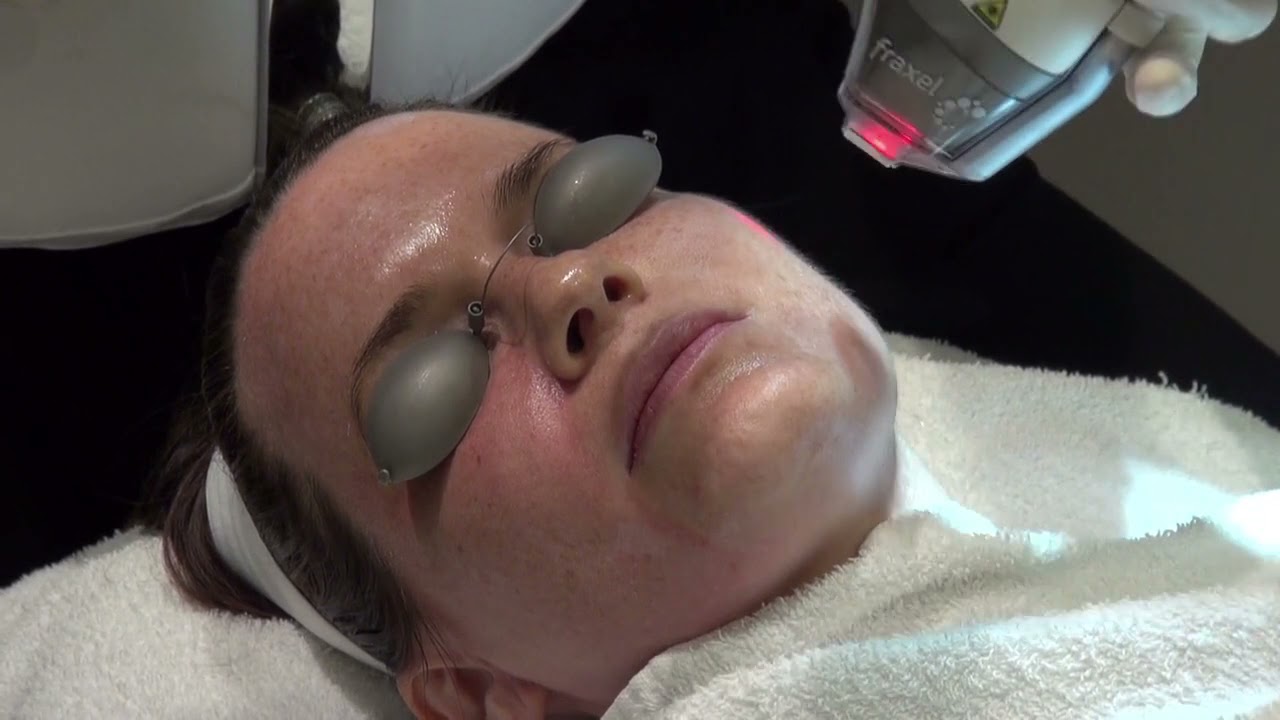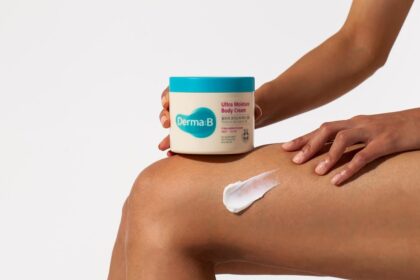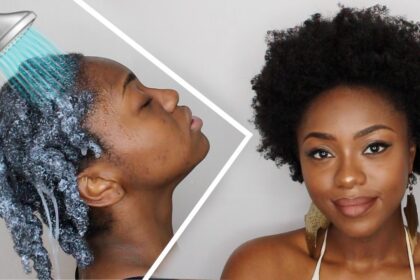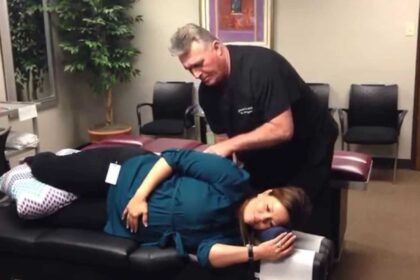The Fraxel laser is a popular skin resurfacing treatment used to improve skin tone, texture and radiance. It uses narrow laser beams to heat the deeper layers of your skin without penetrating the surface.
It produces microscopic injuries that stimulate your body’s natural healing process and promote collagen production. This creates a dramatic result for sun damaged, acne scarred or uneven skin.
How Does Fraxel Work?
Collagen is a key protein that gives skin strength and elasticity. When it breaks down, wrinkles form and the skin begins to sag. Thankfully, Fraxel can help stimulate collagen production and promote the healing of damaged skin cells.
The lasers used doctor Cameron Rokhsar in Fraxel resurfacing penetrate the skin and stimulate the growth of new collagen fibers. The new fibers help reduce fine lines and creases while improving overall skin tone and texture.
Another benefit of Fraxel is that it can help fade discoloration caused by sun damage and other environmental factors. It works by destroying the clusters of melanin that cause brown spots on your skin.
This treatment can also reduce the appearance of blemishes like age spots, acne scars, and other hyperpigmentation issues. The procedure can also minimize the appearance of stretch marks by increasing collagen production.
There are two types of Fraxel: ablative (which removes the top layer of skin) and non-ablative. A dermatologist may choose the type of treatment based on your particular condition.
The ablative Fraxel treatment (also called CO2 resurfacing) is the more aggressive treatment that requires longer downtime and requires a patient to avoid direct sunlight for at least 3 months. It can cause a red, swollen, and irritated appearance during the first few days of recovery, but it will eventually fade away.
However, it’s important to note that ablative treatments can also trigger an allergic reaction, so patients should be extra careful. In addition, it’s best to keep skin hydrated after a Fraxel treatment by skipping products that contain potentially sensitizing ingredients and focusing on a light cleanser and moisturizer three to four times a day.
The non-ablative Fraxel treatment (also called Dual) is a more gentle alternative that doesn’t require as much downtime. It uses a dual laser setting with different wavelengths to treat the skin’s superficial epidermis and dermis layers for both hyperpigmentation and fading lines, wrinkles, and scarring. The doctor can customize the wavelengths to match your needs and skin tone, which helps to ensure that your results are long-lasting.
How Long Does It Take to See Results?
Fraxel laser stimulates collagen production, which helps smooth out wrinkles and improve the appearance of scars. It’s a non-ablative skin resurfacing treatment that doesn’t require extensive downtime and is safe for most patients.
A topical numbing cream is applied before the laser treatment and cold air is used on the treatment area during the procedure to minimize discomfort. The procedure lasts 20-25 minutes for a full face, and most people feel very comfortable after treatment.
After your treatment, you’ll experience redness that resembles a mild sunburn and swelling. This is normal and will subside after a few days. The treated area may also become pink, which is a sign that the skin is responding well to the treatment.
You should avoid direct sun exposure for a few weeks and use a sunscreen with SPF 30 or higher. This will help protect your new skin from damage while the new epidermal layer develops.
Most patients are able to return to work and other daily activities within a few days after their treatment. They can also resume shaving and applying makeup, but they should be careful to protect the newly resurfaced skin from the sun.
When you begin to see improvement after a Fraxel laser treatment, the first thing you’ll notice is that your skin has a smoother texture and that scars are less prominent and faded. You’ll see these results gradually over the next few months as the deeper layers of your skin heal.
For more severe skin conditions like scarring or hyperpigmentation, you may need multiple treatments to achieve the best results. The number of sessions you’ll need depends on your unique skin condition and the depth of your scarring, but most people see a noticeable difference after only three or four treatments.
Your provider will be able to answer your questions and provide specific recommendations on how many treatments you’ll need for the best results. To get the most out of your treatment, you should take care to prevent sun exposure, avoid smoking, and eat a healthy diet.
During your Fraxel laser treatment, a dermatologist will methodically guide the handpiece across sections of your skin in short light-energy bursts. These pulses are similar to the pricking of a rubber band, and they produce small amounts of heat that trigger your body’s natural healing process. This stimulates your skin to regenerate and create new collagen and elastin.
What Are the Side Effects of Fraxel?
Fraxel is an effective treatment for sun damage, scarring, and fine lines because it stimulates your skin’s natural collagen production. It works by heating up the cells in the deeper layers of your skin, which causes them to produce new collagen and elastin. This process helps to restore a youthful glow and smooth out the surface of your skin.
One of the key benefits of Fraxel is that it’s a non-ablative laser, which means it doesn’t cause any significant harm to your skin’s outer layer. Ablative lasers, on the other hand, vaporize the tissue beneath the skin’s surface. These treatments can be a little harsh on the skin and aren’t ideal for darker skin tones, so it’s important to speak with your dermatologist before getting one.
Another key advantage is that Fraxel is a fractional resurfacing technique, meaning it only targets certain areas of the skin at a time (think: grid). For each targeted area, the treatment removes old pigmented cells and allows your body to heal the damaged area. This method also reduces your risk of side effects, like blistering and scarring.
A few days after your treatment, you may notice a bit of redness and swelling. You should stay cool and apply a topical anesthetic, as well as keep your head elevated to help prevent swelling.
You should also avoid direct sunlight, since you’ll be at risk for a skin burn. This type of damage can aggravate your existing wrinkles and scarring, so wearing sunscreen is crucial after any treatment.
While the majority of side effects are resolved within a week, there is a possibility that you’ll experience inflammation, flaking, or peeling after your treatment. This is why it’s recommended that you limit your sun exposure, particularly during the cooler months when the sun is less intense.
If you’re prone to acne or breakouts, make sure you let your dermatologist know ahead of time. This can allow them to postpone your treatment until your pimples calm down.
The best way to protect your skin from the risk of side effects is by scheduling your appointment for Fraxel during the fall or winter. This is the ideal time to get your treatment because there’s less chance you’ll be spending too much time outside during these cooler months, which can increase your risk of developing a sunburn or premature skin aging.
Can Fraxel Be Used to Treat Other Skin Conditions?
Fraxel laser is FDA approved to treat skin resurfacing, fine lines and wrinkles, surface scarring, pigmentation, sun damage, and actinic keratosis (bumps on the skin). This treatment can also improve the appearance of acne scars and surgical scars.
If you have a dark spot, freckle, or scar that you’ve been trying to get rid of but can’t, it’s likely due to sun damage. You may also have a spot that’s enlarged or itchy.
A laser can help with these problems by creating microscopic damage to stimulate the body’s natural production of collagen and elastin, which helps to repair damaged skin and reduce the signs of aging. In addition, the procedure can reduce sun damage and actinic keratosis so your skin looks younger and smoother.
Unlike other treatments, Fraxel laser works by treating only a fraction of the skin at a time, leaving the surrounding tissue intact and promoting fast healing. That’s why patients report a very quick recovery time.
The treatment involves applying a topical numbing cream to the area, then undergoing the procedure. Afterward, you’ll likely feel a little redness and swelling in the area where the laser was used. This will subside after a few days.
For many people, this’sunburn’ feeling is a sign that the body is responding to the stimulation of the laser treatment. It will eventually fade to reveal smoother, more youthful looking skin.
This process can take a few weeks to complete, although some results will begin to show in as little as a week. During this time, it’s important to remember to wear sunscreen and use moisturizer to protect your newfound radiant skin from the damaging effects of the sun.
In addition to the benefits of cellular renewal, smoothing skin’s surface, and reducing hyperpigmentation and sun-damage, Fraxel also reduces the appearance of facial redness or rosacea. It can even be used in conjunction with other treatments to address these common conditions.
For most people, the best results are achieved through a series of Fraxel treatments spaced at least four to six weeks apart. You’ll notice a noticeable improvement in your skin after the first treatment, but for the most dramatic results, multiple treatments are recommended to achieve the best cosmetic outcome possible.




